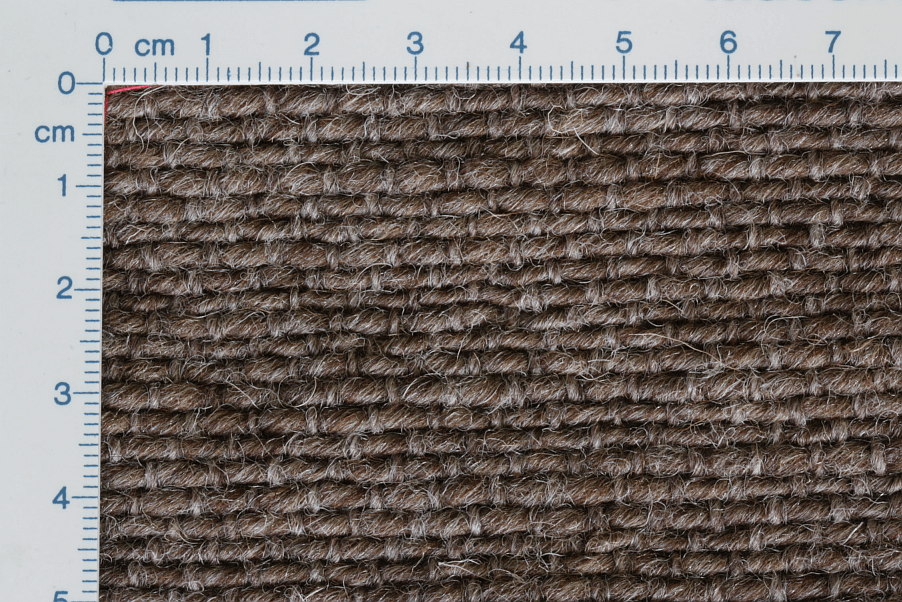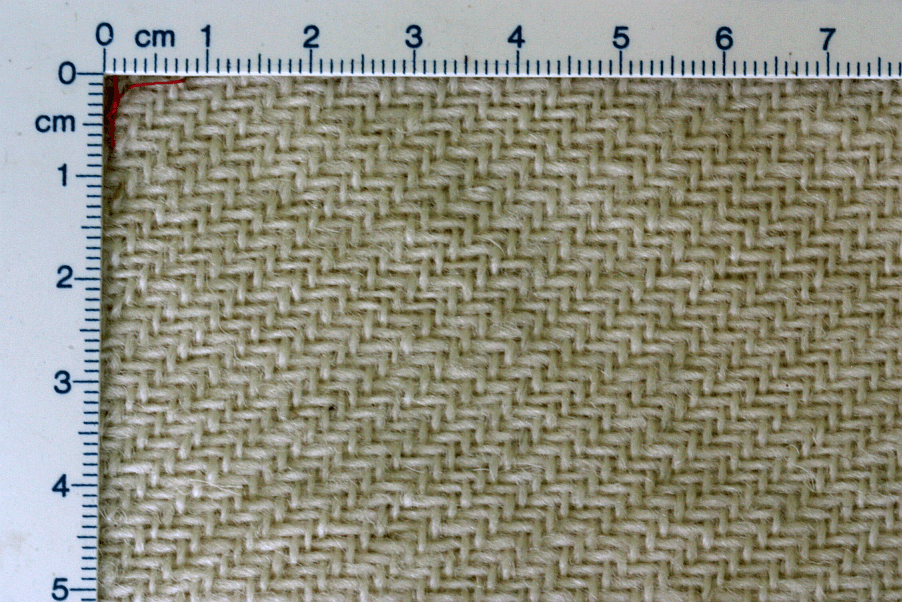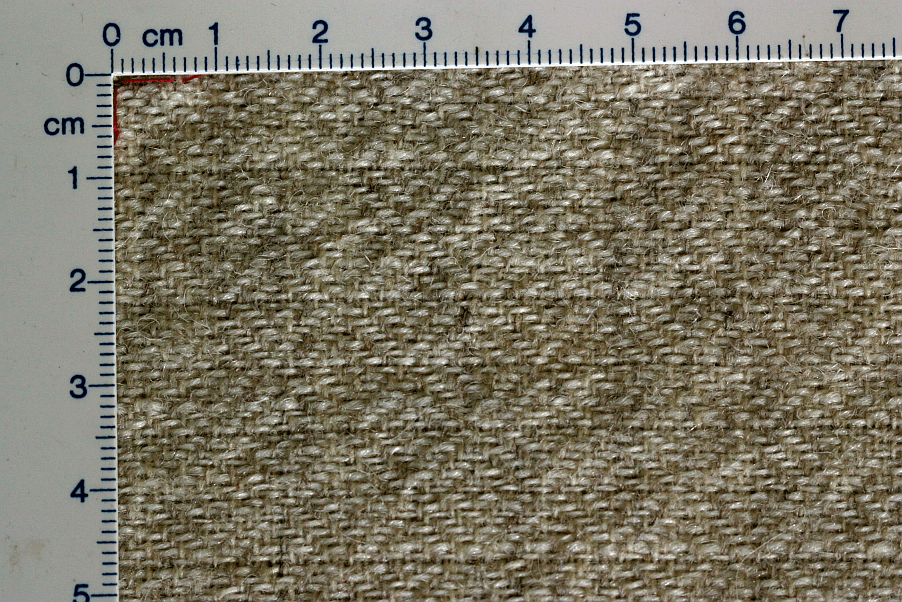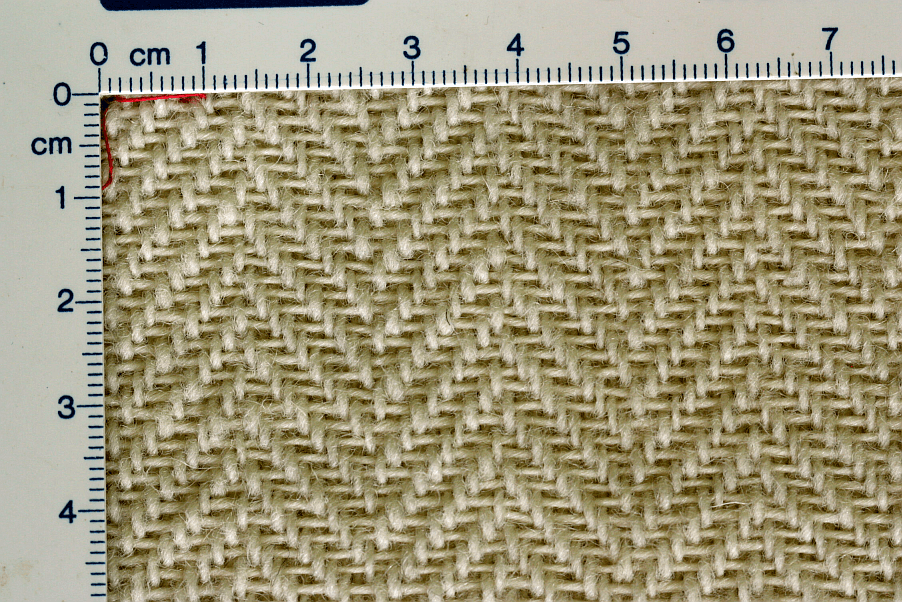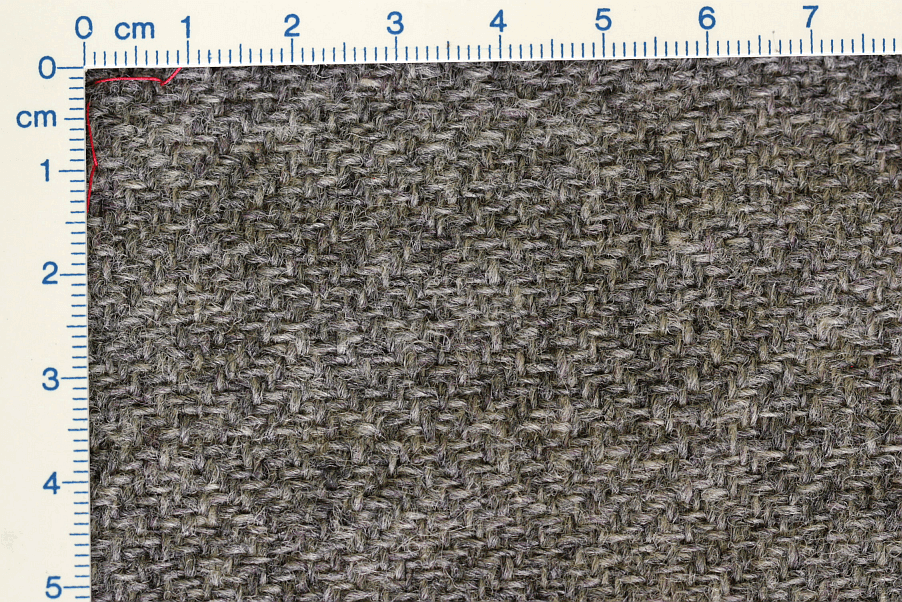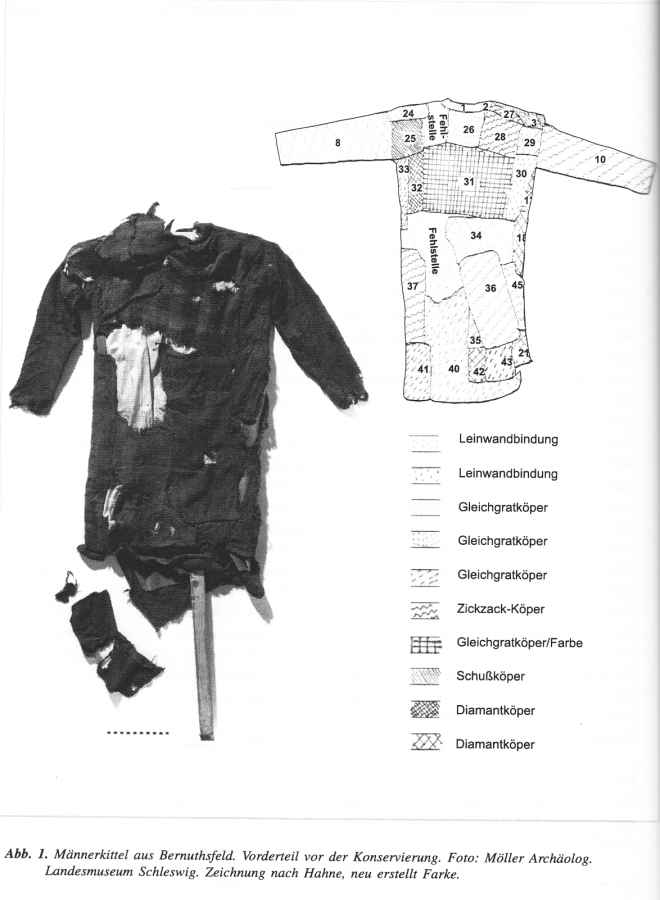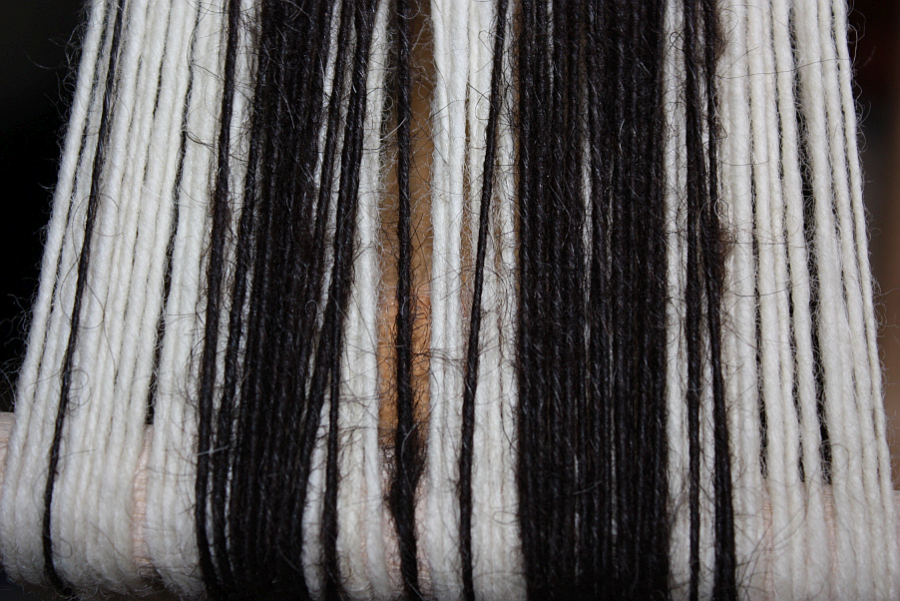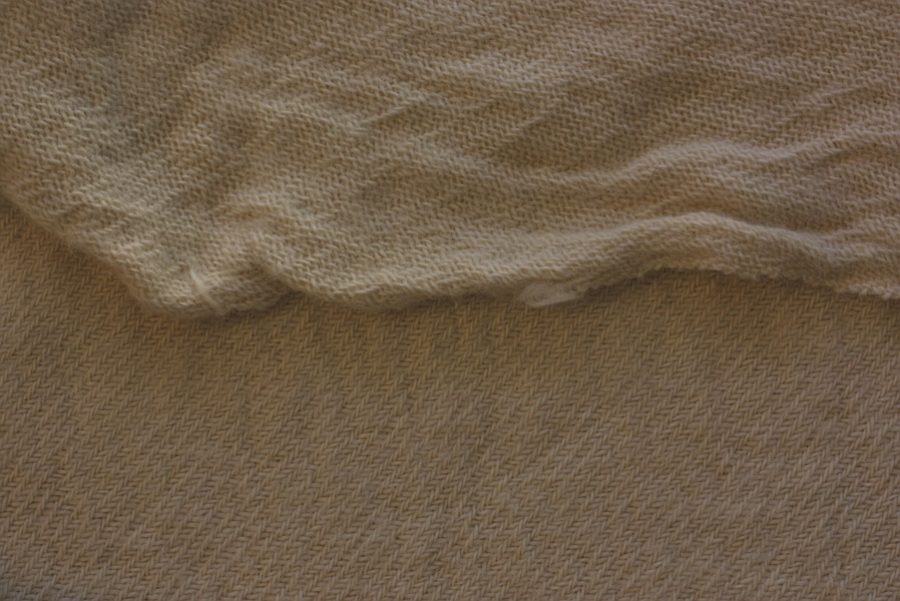Today, there's progress going on with the Bernuthsfeld project - finally, after the conference and event marathon of the last few weeks. It's nice to settle down again and get some actual textile work done for an actual project, and I'm thoroughly enjoying the lasting smell of birch leaf dye on some of the fabrics.
It's also, as always, utterly fascinating to see how many details you need to know to replicate something, or at least get close to replicating it. I'm very sure that the original maker of this tunic, made out of previously used fabric pieces, didn't bother about many of the steps, or was indifferent regarding which piece of fabric got to sit on top of its neighbour and which got to sit underneath... but for us, trying to keep as close as possible to the original, this is of course a thing to think of (and to look for in the many lists and photographs we made during our documentation session).
[caption id="attachment_3477" align="alignnone" width="721"]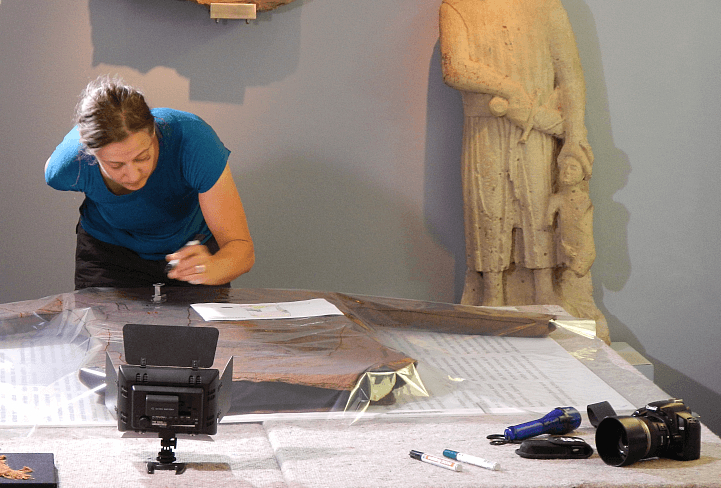 Snapshot of me doing documentation of the patches of the original tunic - which was then turned into a pattern...
Snapshot of me doing documentation of the patches of the original tunic - which was then turned into a pattern...
There's no such thing as a perfect replica of a historical fabric, due to oh so many reasons - and one of them is that you never get all the data you would need. As I've recently told somebody, it's not a question of if you forget to look for a given detail, or take a note, or manage to take a decent picture of a detail that you later on need - it's a question of when you discover that you missed this something, and how many of these discoveries you make, and how bad the missing links are for your overall picture and process.
That said, up until now, there've been a few hitches - some of them due to misunderstandings or misinterpretation of the conservation reports, one of them due to an actual error in them, and none of them really ruinous. I'm hoping like hell it will stay like this!
It's also, as always, utterly fascinating to see how many details you need to know to replicate something, or at least get close to replicating it. I'm very sure that the original maker of this tunic, made out of previously used fabric pieces, didn't bother about many of the steps, or was indifferent regarding which piece of fabric got to sit on top of its neighbour and which got to sit underneath... but for us, trying to keep as close as possible to the original, this is of course a thing to think of (and to look for in the many lists and photographs we made during our documentation session).
[caption id="attachment_3477" align="alignnone" width="721"]
 Snapshot of me doing documentation of the patches of the original tunic - which was then turned into a pattern...
Snapshot of me doing documentation of the patches of the original tunic - which was then turned into a pattern...There's no such thing as a perfect replica of a historical fabric, due to oh so many reasons - and one of them is that you never get all the data you would need. As I've recently told somebody, it's not a question of if you forget to look for a given detail, or take a note, or manage to take a decent picture of a detail that you later on need - it's a question of when you discover that you missed this something, and how many of these discoveries you make, and how bad the missing links are for your overall picture and process.
That said, up until now, there've been a few hitches - some of them due to misunderstandings or misinterpretation of the conservation reports, one of them due to an actual error in them, and none of them really ruinous. I'm hoping like hell it will stay like this!





